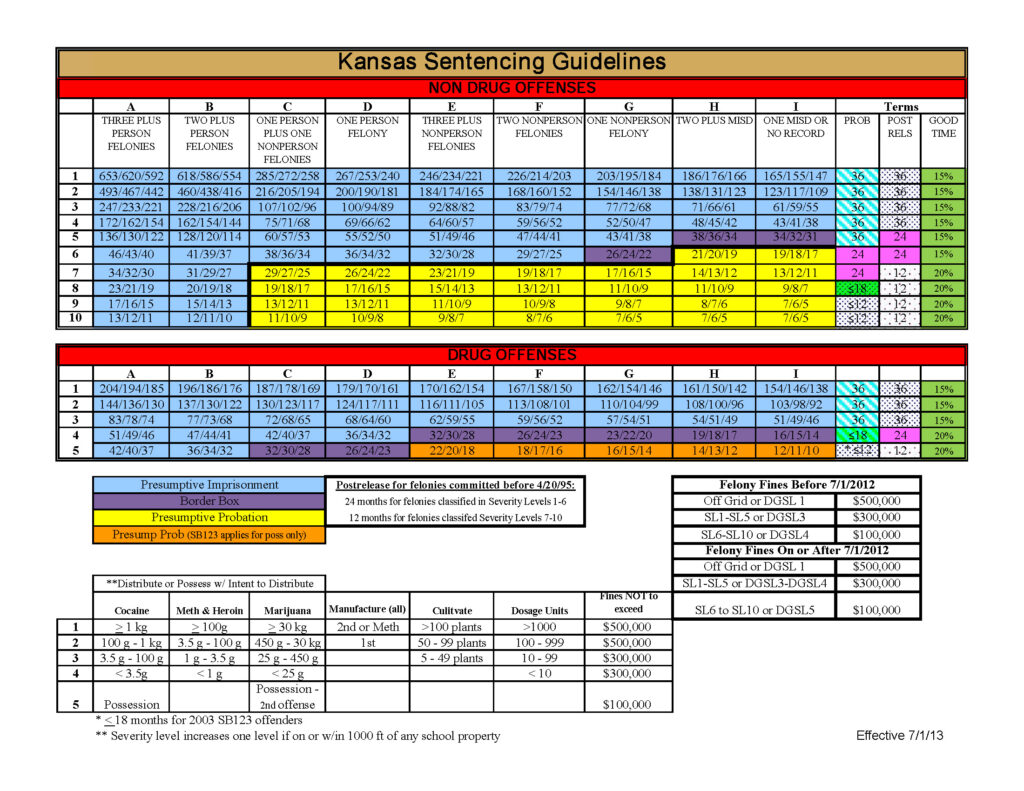For most felony crimes, Kansas has a system of sentencing guidelines that determine punishment based on two key factors: the severity level of the crime and the defendant's criminal history. The state uses a sentencing grid as a guide to determine the appropriate punishment.
If you’ve been charged with a felony crime in Kansas, it’s likely you’re feeling anxious about how much time you could spend in prison. For many, one of the most stressful parts of facing criminal prosecution is trying to figure out the potential penalties if they’re convicted.
While this article can provide a summary explanation of the Kansas sentencing grid, it’s important to immediately contact a criminal defense attorney if you’ve been charged with a crime. They’ll guide you through the court process and help explain what punishment, if any, you could be facing.
Kansas uses a felony sentencing grid as the primary tool to calculate presumptive sentences for defendants convicted of a crime.
The grid has the crime severity levels listed vertically from 1 to 10, with 1 being the most severe. Across the top are the criminal history categories from A to I, with A being the most extensive criminal history. Similarly, the drug offenses grid is listed in severity from 1 to 5 and criminal history from A to I.

Each grid box where the severity level and criminal history category intersect contains three numbers. The middle number represents the standard presumptive sentence length in months that the judge could impose.
The other two numbers provide a range – a minimum and maximum number of months that a judge can sentence. Because each case is unique, judges have discretion to choose the length of sentence they determine is appropriate. Judges can depart upward or downward from the presumptive sentence length, but there are limits and departures can be appealed.
For example, a severity level 5 crime with a criminal history category C would fall into a box showing sentences of 60, 57, or 53 months. The presumptive sentence would be between 53 and 60 months.
Here’s a quick look at how to read the various colors and keywords included in the Kansas sentencing grid.
While the sentencing grid may appear complex, it brings uniformity and transparency to sentencing in Kansas. For defendants, understanding how these guidelines work is critical to evaluating their potential penalties.
If you’ve been charged with a crime, contact Wichita, Kansas-based criminal defense attorney Jeremy D. Koop. With experience as both a prosecutor and defense lawyer, he can help you navigate the legal process and potentially lower or eliminate the amount of time spent in prison.
The information provided in this article does not constitute legal advice; it is for general informational purposes only.